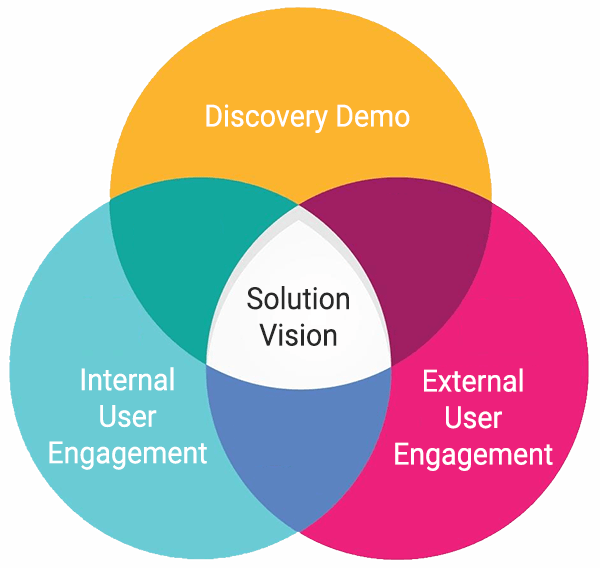In engaging with your external user community, the goal was to encapsulate a product vision that effectively served the needs for a diverse set of use cases AND then compare that vision to the technology solution envisioned in your initial Discovery Demo. The goal is the same in engaging with your internal end users and arguably much easier, as you’ll have far greater access and opportunity to drill down in detail on system specifics with internal users matching every possible use case scenario—many of whom have years of experience with the current system and are intimately acquainted with its relative pros and cons.
This is precisely why we advocate engaging with your external users first—to not lose sight of the fact that your new system must meet and exceed the needs of the business community it serves—and with that in mind, it’s crucial that your external end users receive equal prioritization AND input in your solution vision.
With government staff fully hands-on with such systems daily, it is far easier for an agency to articulate its own internal pain points and system requirements. Unfortunately, this natural temptation can result in a product vision dominated by a voluminous and detailed set of internal user requirements and a vague, poorly defined set of external user requirements.
Again, your Solution Provider can prove an invaluable resource here, providing you with effective information gathering tools that will ensure your internal end user engagement is properly directed, capturing the system perspectives of both parties: your colleagues and the citizens they serve.

Unlike a detailed Fit/Gap Assessment and Change Management Analysis, your goal as Product Champion and Change Agent here is not to land on the definitive set of software requirements that will define your eventual system deployment. Rather, you are focused on articulating an overall Solution Vision, one that you can compare with the Solution Visions resulting from your previous Discovery Demo and End User Engagement phases. In essence, each Vision is one quadrant of a Venn Diagram with the intersection of these three quadrants representing the essential Solution Vision that will most resonate with the vast majority of stakeholders. In time, your Solution Vision will need to incorporate the needs of fourth and fifth quadrants, the IT and procurement/finance teams who will need to see their own requirements satisfied in the proposed Solution Vision. For now, you must focus your efforts on merging the visions of your external and internal users and the software solution that can satisfy them both.
To most effectively engage with your internal users to inform your Solution Vision, take the following steps:
Focus your investigation on five topics of enquiry:
Utilize information gathering tools that equip you to cast as wide a net as possible. As budget is approved and your solution proposal gathers momentum, there will be plenty of opportunity to form a more focused working group representing the interests of key stakeholders.
As this stage draws to a close, you’re probably getting excited. You can see the common areas where the needs of your internal and external users meet, and you’ve identified a definitive list of features and benefits that align closely with the outputs from the software system assessed in your initial Discovery Demo.
You’re ready for the next crucial step. It’s time to craft your Change Narrative.
Previously in this series: How to Engage Your External User Community for Feedback
Coming soon: How to Craft a Change Narrative to Inspire Innovation
Would you like to be notified when the next installment in this series is available?